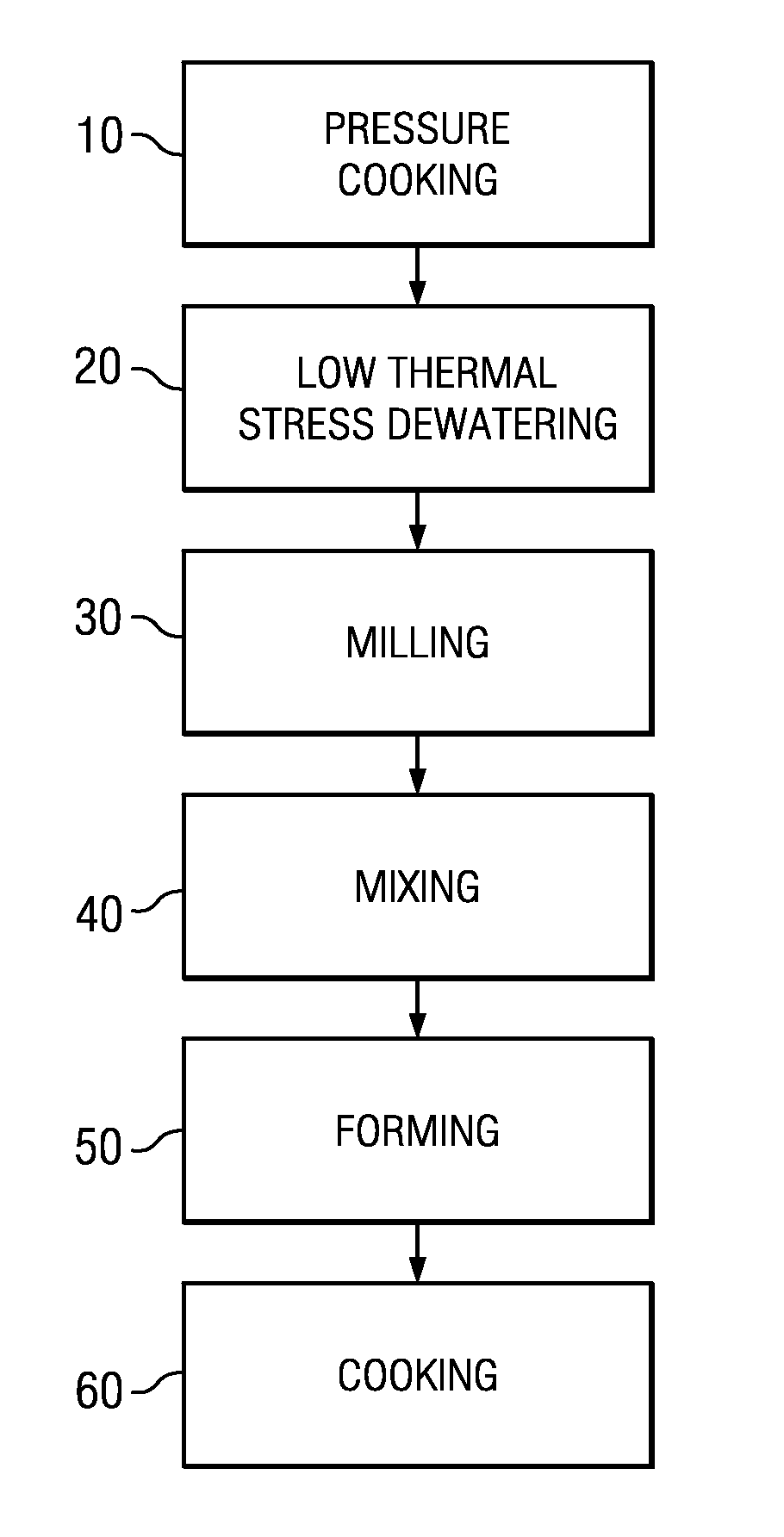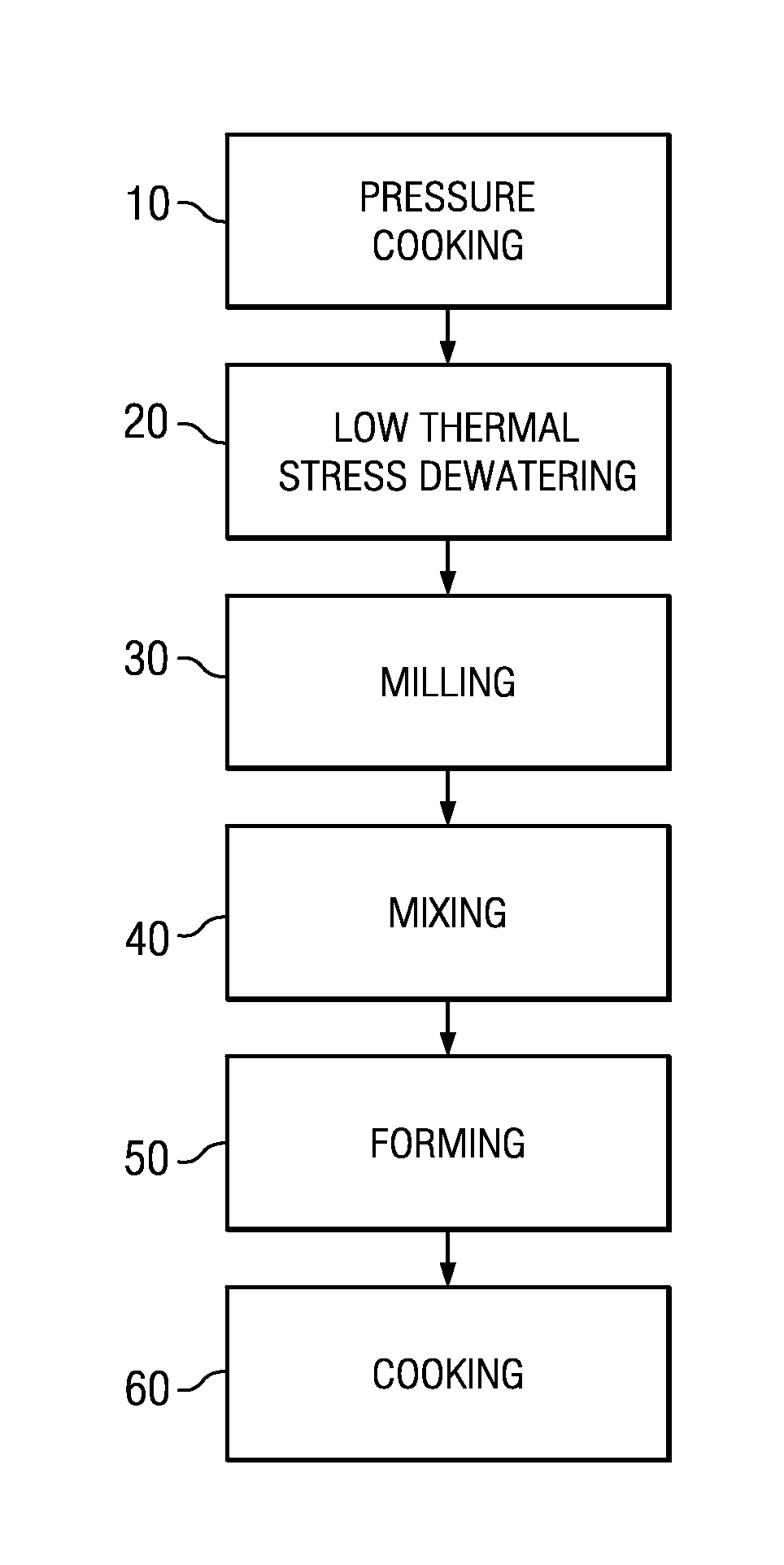Method for Making Legume-Based Dough and Nutritional Products Therefrom
a technology of legume-based dough and nutritional products, which is applied in the field of sheetable dough production, can solve the problems of long cooking time, loss of dietary fiber and protein, and affect the consistency of the dough product and the nutritional content of the end product, so as to achieve time and cost saving, reduce cooking time, and good source of protein
- Summary
- Abstract
- Description
- Claims
- Application Information
AI Technical Summary
Benefits of technology
Problems solved by technology
Method used
Image
Examples
Embodiment Construction
[0011]As used herein, a suitable “legume” is meant to refer to a raw, whole, unprocessed legume having a native protein content ranging from about 19% to about 45% protein on a dry weight basis and includes only native legumes isolated from a natural plant source. Suitable legumes can be commercially acquired from any number of manufacturers and include peas, soybeans, navy beans, black beans, red kidney beans, white kidney beans, lima beans, canary beans, fava beans, cranberry beans, lupins, garbanzo beans, mung beans, red lentils, green lentils, and pigeon peas. In particular, this method works well even for those varieties of beans that typically require long soaking times prior to cooking, often overnight, such as hard beans, for example chickpeas, soybeans, red kidney beans, white kidney beans, black beans, whole peas, lima beans and canary beans.
[0012]When using raw, whole, unprocessed legumes, long periods of soaking are typically required in order to soften the legumes befor...
PUM
 Login to View More
Login to View More Abstract
Description
Claims
Application Information
 Login to View More
Login to View More - R&D
- Intellectual Property
- Life Sciences
- Materials
- Tech Scout
- Unparalleled Data Quality
- Higher Quality Content
- 60% Fewer Hallucinations
Browse by: Latest US Patents, China's latest patents, Technical Efficacy Thesaurus, Application Domain, Technology Topic, Popular Technical Reports.
© 2025 PatSnap. All rights reserved.Legal|Privacy policy|Modern Slavery Act Transparency Statement|Sitemap|About US| Contact US: help@patsnap.com


